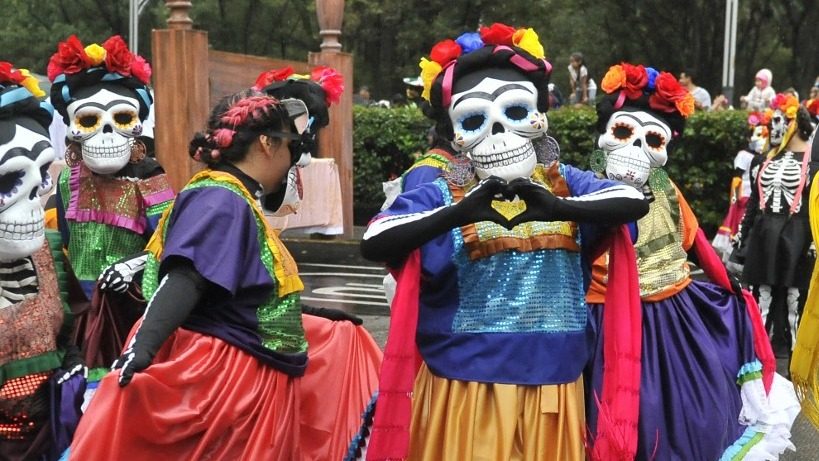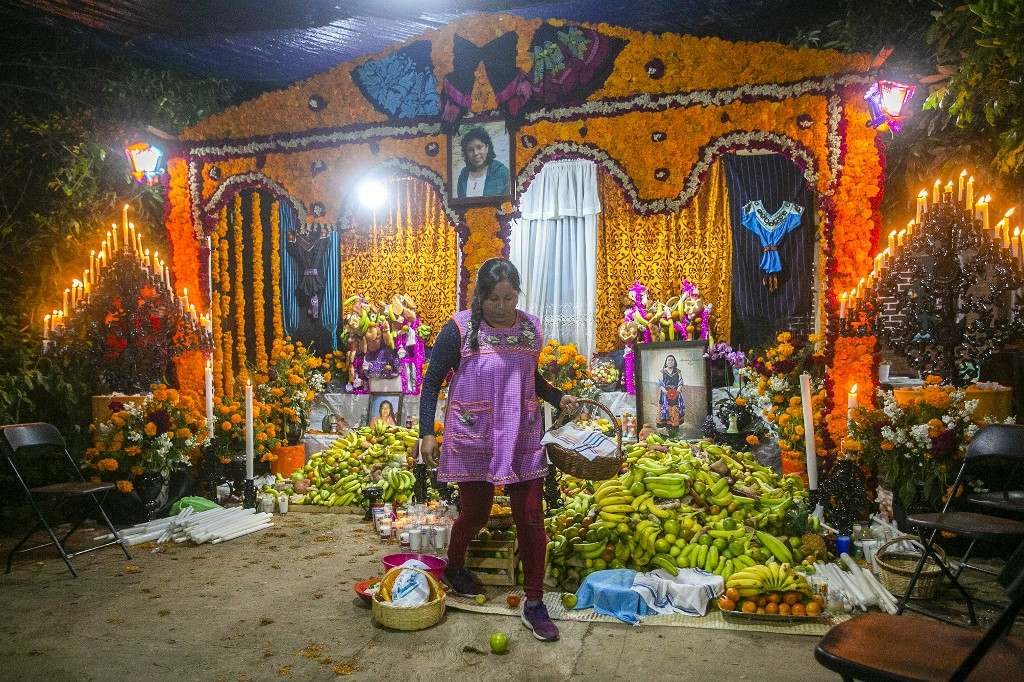SUMMARY
This is AI generated summarization, which may have errors. For context, always refer to the full article.

MEXICO CITY, Mexico – Death can be a morbid and solemn subject in many cultures, but in Mexico, it’s a cause for celebration – at least for two nights a year.
From November 1-2, people throughout the country deck their homes, streets and relatives’ graves with flowers, candles, confetti and colorful skulls for the Day of the Dead.
The traditional festival honoring the deceased centers around the belief that the living and the dead can commune during the brief period.
Known for its bright colors and elaborate, cartoonish skeleton costumes, the festival has become a popular symbol of Mexican culture around the world.
“We’re all afraid of death, and in Mexico, it’s part of a celebration, a ritual of color. It’s amazing,” said Alejandra Diaz.
The 30-year-old traveled from Colombia to Mexico City for a week just to take part in the festivities.
The Day of the Dead, which is widely considered to be Mexico’s most important festival, is rooted in the indigenous Mexica culture, mixed with Christian superstition brought by Spanish colonizers.
The Mexica were the dominant indigenous population in pre-Hispanic Mexico.
The modern celebration is based on a Mexica legend that after death, they traveled through the 9 regions of the underworld, known as Mictlan.
According to Octavio Murillo, heritage director at the National Institute of Indigenous Peoples, a person’s “final destination was determined by how they behaved in life.”
The ancient pagan tradition has since developed into a modern festival.
“It’s a celebration with many years of history, to which indigenous peoples have incorporated new religious elements from Christian tradition, such as the gathering of offerings,” said Murillo.

Millions of Mexican families set up altars on which they place the personal belongings of the dead and adorn them with the intensely orange Mexican marigold flower and confetti in the shape of skulls.
‘Part of our identity’
The Mexico City government organizes various activities for the festival, which in 2003 was added to the UNESCO Intangible Cultural Heritage list.
This year, the festival began with a massive parade of “Calavera Catrinas” – the iconic cartoon skeleton wearing a European-style hat – and ended with an offering at the Chapultepec Forest.
Catrina, who was created by cartoonist Jose Guadalupe Posada in 1910, was a satirical dig at indigenous people who tried to mimic colonial culture.
She has since been adopted as the embodiment of the Day of the Dead.
“Mexico views death as something normal and makes the most of it,” said Yamile Nino, a 15-year-old student whose face was painted like Catrina.
“It’s part of our identity.”
In his book The Labyrinth of Solitude, Mexican author Octavio Paz, who won the 1990 Nobel Prize in Literature, wrote that “the Mexican is familiar with death, jokes with it, caresses it, sleeps with it, celebrates it.”
For sociologist Jonathan Juarez, the Day of the Dead is “in itself an expression of Mexican multiculturalism.”
“All cultures are modifiable,” said Juarez, an academic from the National Autonomous University of Mexico.
“On the other hand, life and death are highly striking phenomena for humans and produce great fervor,” he said, noting that communities in other countries also share the Mexican view of death.
Susana Rodriguez, a 44-year-old housewife, has fond childhood memories of the celebration and is passing on that enthusiasm to her children.
“The dead wake up from their eternal dream to share life with us,” she said. – Rappler.com
Add a comment
How does this make you feel?
There are no comments yet. Add your comment to start the conversation.